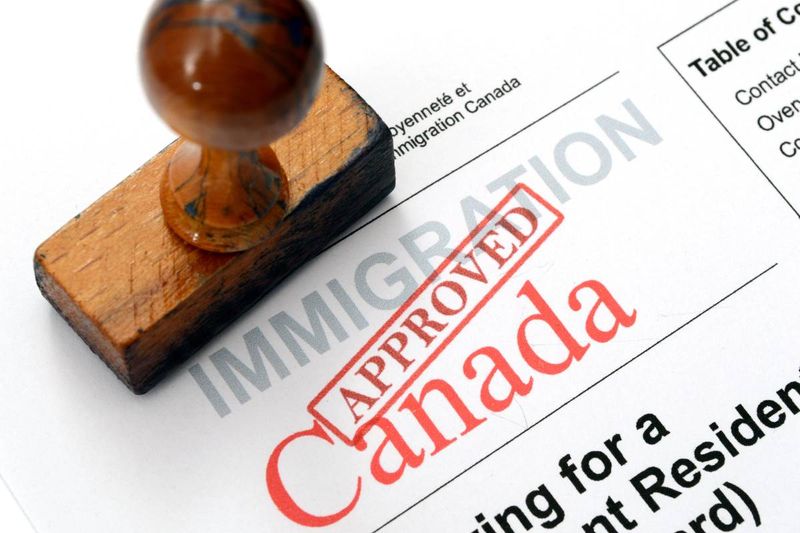With Canadian borders still open for temporary workers who want to migrate to Canada, despite the Coronavirus lockdown in place, employers have been given strict measures that need to be adhered to in order to protect its employees.
Immigration visa processing has not slowed down, with invitations to live and work in Canada actually increasing in certain programs such as Express Entry and Provincial Nominee Programs. The Canadian government has also waived certain procedures, such as the usually necessary Labour Market Impact Assessment (LMIA), which usually requires an employer to advertise a job in Canada for up to 3 months before searching for foreign workers to fill the vacant position. This has not only sped up the application process for those in the agricultural, food processing and transportation industries but has also opened up more employment opportunities to temporary foreign workers.
Almost 60% of Canada’s immigrants are welcomed through economic programs due to the high demand to fill jobs in various sectors of Canada’s labour market. In 2019, Canada saw between 433,000 - 500,000 jobs in Canada remain vacant in each quarter, which means that the demand for foreign workers remains constant.
With faster processing times and higher employment opportunities, now more than ever is the perfect time to apply to work in Canada as a temporary worker.
To get the process started on your Canadian visa application to migrate to Canada, simply click the link below to apply for your eligibility assessment or keep reading to find out just how much Canada values temporary workers and the lengths they are going to, to protect your well-being.
How Canada is Taking Care of Temporary Foreign Workers

Because of the impact, the COVID-19 has had globally, Canada has implemented certain protective measures as well as offered support for temporary workers living and working in Canada.
Criteria for Canadian Employers
Due to the mandatory 2 week self-isolation period for all people entering Canada, the Canadian Government has implemented 9 criteria that all Canadian employers need to comply with in order to protect it’s foreign workers, citizens and permanent residents against the Coronavirus. Employers who provide accommodation have an extra 5 criteria that need to be adhered to.
Below are the 9 criteria that all Canadian employer need to meet:
- Employers must comply with all laws and policies regarding the employer-employee relationship during the self-isolation period
- Employers must give foreign workers their regular pay and benefits during the self-isolation period.
- Employers cannot authorize workers to work during the self-isolation period even if requested by the worker.
- Employers must regularly monitor the health of workers who are self-isolating
- Employers must arrange for symptomatic workers to be fully and immediately isolated from others and contact local health officials.
- Employers must ensure that all workers have access to proper hygiene.
- Employers should provide information to the worker on COVID-19 either on or before their first day of self-isolation.
- Employers, and all Canadian residents, should report Quarantine Act violations to local law enforcement.
- All people in Canada are expected to follow the latest public health requirements.
Additional criteria for employers supplying housing for foreign temporary workers include:
Additional Criteria for Canadian Employers Providing Accommodation
- Employers must provide housing for self-isolating workers that is separate from those who are not in self-isolation.
- Employers can house workers who are subject to self-isolation together, but the housing must enable them to be two metres apart at all times.
- Employers should ensure that surfaces in the accommodations are cleaned and disinfected regularly.
- Employers should post information about preventing the spread of COVID-19 in their accommodations
- Employers must ensure the accommodations allow workers to avoid contact with people over age 65, and people with medical conditions.
$50 million in Government Funding to Support Temporary Workers

One of the main ways that Canada is protecting its people is implementing a mandatory quarantine on all people entering the country for 14days. This includes temporary workers and the government has therefore introduced a $50 million economic aid specifically to help temporary workers get by until they can start their new job in Canada. Each person will receive up to $1,500 and is available to temporary workers until the Quarantine Act is no longer in effect.
How Can I Migrate to Canada as a Temporary Foreign Worker in 2020?

In order to migrate to Canada as a foreign worker, you will more than likely need a work permit. Your occupation as well as the province or territory you choose when planning to live and work in Canada.
Step 1: Find out which work permit your need
There are 2 types of work permits:
Employer-specific work permit
This means that you have certain conditions that you need to abide by in order to work in Canada. Your work permit will state:
- a specific employer’s name;
- the length of time that you are allowed to work for; and
- the location of your job.
Open work permit
This work permit allows you to work for any employer in Canada, provided they comply with the conditions and responsibility set out by the Canadian government.
Step 2: Ensure your eligibility
In order to qualify to migrate to Canada, you will have to meet certain requirements. This includes:
- proving that you will leave once your work permit expires;
- having enough money to support you and your family;
- have a clear criminal record;
- be in good health.
Step 3: Select the correct program for your occupation
There are various programs to choose from to migrate to Canada as a temporary worker, depending on your occupation.
1. Express Entry-Linked Provincial Nominee Programs
One of the best ways to migrate to Canada as a temporary foreign worker is through the Provincial Nominee Program Each province or territory has specific labour needs and have immigration streams designed to make the Canadian visa application process easier.
For example, the top 3 PNPs for truck drivers are:
- AINP (Alberta Provincial Nominee Program
- OINP(Ontario Immigrant Nominee Program)
- Saskatchewan INP (Saskatchewan Immigrant Nominee Program)
2. The Atlantic Immigration Pilot - Atlantic Intermediate-Skilled Program
Another option is the The Atlantic Immigration Pilot - Atlantic Intermediate-Skilled Program. This will allow you to live and work in Canada on a temporary basis in one of Canada’s Atlantic provinces and gain valuable work experience so that you can eventually claim enough permanent residency (PR) points to apply to live and work in Canada permanently.
3. The Rural and Northern Immigration Pilot (RINP)
The Rural and Northern Immigration Pilot is perfect if you intend to live and work in one of Canada’s smaller communities. There are currently 11 participating provinces in Ontario, Manitoba, Alberta, Saskatchewan and British Columbia. In order to qualify for this pilot, you will need an offer for full-time work in Canada as well as meet other job requirements.
4. Agri-Food Pilot
The Agri-food Pilot, which is set to launch in May 2020, allows you to migrate to Canada in the agricultural as well as meat manufacturing and animal production sectors. You will need at least 1 year of non-seasonal work experience as well as an offer for a valid full-time job in Canada. There are also certain language, financial and secondary education requirements that need to be met.
5. Seasonal Agricultural Worker Program
The Seasonal Agricultural Worker Program (SAWAP) is specifically for foreign farmworkers who want to migrate to Canada from any of the 11 participating countries in the Caribbean as well as Mexico. You will be able to work on a choice of over 36,952 farms, however, it is important to note that you can only work for one employer at a time or in other words, you are not allowed to have multiple jobs at any given moment.
For more information on how to migrate to Canada as a farmworker visit our blog here.
4. Start the Application Process
Now that you know which immigration program is right for you you can start your visa application process. If you plan to use an immigration agency, be sure to use a legitimate company and ensure that their visa consultants or RCICs (Regulated Immigration Consultants) are accredited and are in good standing with the Canadian government.
Remember a work permit allows you to live and work in Canada and does not allow you to enter the country. You will either need a visitor visa or an electronic travel authorization (eTA) to legally arrive in Canada.
How We Can Help You Migrate to Canada

Applying for a visa can be time-consuming and difficult to wrap your head around. With strict deadlines, procedures and requirements, it can be easy to make a mistake that could cost you your chance to migrate to Canada. But with the guidance and assistance of one of our knowledgeable Regulated Canadian Immigration Consultants (RCIC’s). the process will be stress-free.
When you choose to use our expert and government trusted service you will get:
- An in-depth eligibility assessment
- Guidance on which of 70+ immigration programs and visas to choose from;
- An immigration plan tailored to your individual needs;
- A review and submission of all application forms and documentation; as well as
- Support through every step of the application process.
All you have to do is fill out our application form to receive your eligibility assessment and let us take care of the rest. It’s just that simple! Your Canadian journey starts here.
Be sure to follow us on Facebook, Twitter, LinkedIn and Instagram to stay up to date on Canadian immigration and visa news.



